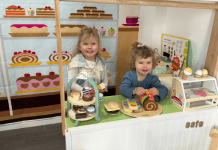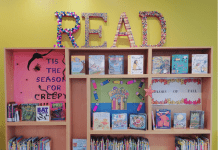That’s right. We taught our three-year-old son to potty train in a weekend. I went into it pretty terrified, but it turned out to go more smoothly than I thought!
Okay, maybe not easy-peasy-lemon-squeezy, but potty training turned out to be easier than I imagined it could be. I thought it would be weeks or months of accidents and laundry and tears and despair. A full-on mom melodrama played in my mind as we built up to the day. And, as it turned out, it really wasn’t that bad. I was blown away by our success and it can be easy for you, too!
Every child is unique. I know people whose kids were potty trained before they turned two and others who didn’t get the hang of it until they were four. It is normal for there to be variance. I simply want to share what worked for us, in case some of what we did could be useful for you!
Here are the nine keys to our success I credit that helped us potty train in a weekend.
1. Wait Until Your Child is Ready
The first key to our success was waiting. We simply waited. And we waited. Then we waited some more, until he was ready. At the very beginning, we started with exposure. This included reading potty books and an open-bathroom policy so he could see my husband and me doing our business. Once he started asking questions, somewhere between 18- and 24-months-old, we bought him a training potty. We explained what it was and left it in the bathroom for him to try whenever he wanted. Sometimes the training potty received attention, other times it just collected dust. Eventually, his interest grew and he tried it out more frequently.
We also waited for our son to develop the ability to pull down and back up his own pants. Without the ability to easily remove clothing and eliminate the physical barrier to using the potty, I figured he would have more accidents than if we simply waited. We have been able to avoid a lot of frustration by waiting for him to develop this ability.
One of the final indicators we held out for was a successful, intentional use of the potty. We felt our son needed to use the potty on purpose instead of simply getting lucky. So, one night around his third birthday I asked him if he wanted to try the potty. He said yes, and while sitting there he was able to pee. A week or so later, the same scenario for poop. From this, he was able to clearly understand that things are supposed to come out of his body, go in the potty and that he could influence the process.
2. Keep it Positive
From the beginning, my husband and I agreed we wanted our son’s experience of using the potty to be positive. We never wanted to create a battle. Instead, we solely focused on positive reinforcement when he showed the behaviors we were working towards.
That’s why we decided to use incentives and rewards. I made our son a potty chart where he could earn stickers for trying, as well as for successfully peeing and pooping in the potty. After ten stickers for trying, his reward was wearing a big sticker all day on his shirt. After five successful times peeing in the potty, he earned a piece of candy. And after five successful poops in the potty, he got to pick a prize out of a prize bucket. We had books, toy trucks and cars, trains and toy animals. I found it particularly motivating when our son picked out the prizes that went into the prize bucket. When he knew what was in there, we could reference earning particular prizes when encouraging him to use the potty.
3. Be Flexible and Try New Things
We found that we needed to adjust along the way depending on what seemed to be working for our son. Sometimes he sat down to pee, other times he wanted to stand. Sometimes he liked the little potty on the floor, other times he wanted the child seat on the toilet. There were times he asked for privacy and other times when he wanted us there cheering him on.
Looking back, I’m really glad we didn’t decide our approach and set it in stone before we began. We were open to doing what worked for our son, and in turn, we ended up finding success much quicker than forcing him into doing it a certain way.
4. Build Excitement and Prepare Your Child for What’s Coming
Sudden disruptions to our routine do not usually go well with our kiddo. With that in mind, we talked about making the move out of diapers for a few weeks before the actual start date. Of course, we had been building excitement for months with the books, charts and exposure. But, one thing we added was a special trip to the store to pick out big-boy underwear! He picked out a few packs that he wanted, which helped create more excitement.
As our selected weekend neared, we let him know that one day we would soon be throwing away his diapers for good. We repeatedly talked about waking up on a Saturday, throwing away his diapers and using the potty. By the middle of the week before the big day we could say to him, “What are we doing on Saturday?” and he would say “Throw my diapers away and use the potty!” with excitement.
5. Day One: Stay Focused and Positive
When our selected Saturday came, we did just that. We woke him up and declared “today is the day!” He grabbed the few diapers that remained in his drawer and marched them right to the garbage and we all cheered! I think it helped make it clear in his mind there was no going back – and there wasn’t – he never wore a diaper again!
We didn’t put our son in underwear that first day. Instead, he wore only loose-fitting sweat pants. We figured this would help him understand that nothing would be contained if he went in his pants. Once he was dressed, we began to pump him full of water. A full bladder is important to get that first success!
That first day we went to the potty every 15 minutes. We stayed home and did that all day – so it was important not to have any plans to do anything but potty train. We set a timer on one of our phones, which seemed to help it stay neutral and not a battle of wills between team Mommy/Daddy and our son. Once we got to the potty he could choose how he was most comfortable, but he had to stay there for five minutes. We used a sand timer so that the passing of five minutes would be visual for him.
It took a few hours, but he successfully peed in the potty by lunchtime. The celebration after that first success was so big that he wanted to get praise again and again. When he became discouraged in the afternoon by the constant interruptions we added a single M&M as a reward for trying to use the potty. A few extra M&Ms were worth it to keep the experience a positive one.
6. Accept That Accidents are Part of the Process
He did have a few accidents the first day; two poops, and one time where he was walking to the potty to pee and didn’t make it in time. Accidents are just part of potty training. I suggest stocking up on the cleaning supplies you need and setting them in the bathroom and laundry room so they are convenient when the time comes.
Because our son wasn’t always waking up dry after sleeping, we decided to put him in a pair of training pants at night. However, we decided not to put him in a pair of training pants at nap time. We felt that putting him in a pair of training pants in the middle of the day could be used as a crutch instead of using the potty. Also, we felt it was better for our son to experience accidents as a natural teaching moment of the consequences of not using the potty. We just had to wash the sheets a couple of times a week if he had an accident during nap time. Overall, we have found this to be much less-confusing than putting him in and out of training pants during the day.
7. Day Two: Add Underwear and Celebrate Some More
On Sunday morning we woke him up with underwear! Our son picked out what pair he wanted to wear, and it was a big deal. We all cheered when he put on his big-boy underwear. Pro tip: underwear with characters can be helpful. We could say, “We don’t want to get poop and pee on Buzz Lightyear,” and our son would agree. The characters added another layer of understanding for his little mind.
We were careful, though, not to shame him when accidents happened. When he had an accident on Sunday morning, we assured him Buzz would be okay and he could wear that pair again when they’re clean.
Our schedule on day two stretched the time between trips to the potty to every 30 minutes. Later in the day we stretched to every 45 minutes. He continued to sit (or stand) for the five-minute timer when he was in the bathroom. We still made sure he had plenty of water to drink but it was a bit more relaxed on day two.
By the afternoon on day two, he was getting up from playing and going to pee on his own without any reminders. Best of all, by the evening, he had pooped in the potty! We called relatives to create bigger celebrations and our son loved picking prizes from the prize box. Keeping it positive worked for us.
8. Transition to Rewards for No Accidents
At the end of the two days he had mastered peeing in the potty. In the months that have passed, he has only had maybe one or two pee accidents. It took a little bit longer for him to master making it to the potty in time to poop. We dropped the strict potty schedule on Monday, switching instead to frequent reminders. As such, he did have a few poop accidents that first week. We kept using the potty chart, prizes and praise and after a week or so, the chart filled up from all his success.
Therefore, we switched to rewarding days without accidents. I made a similar sticker chart to reward him for not having accidents. If he wore the same pair of underwear all day he earned one sticker, and if he woke up from sleeping (nap or overnight) dry he could earn two stickers. After the first ten stickers, he earns a treat, and the same for the second row of ten stickers. After he fills the third row of ten stickers he gets to pick a prize from the prize bucket.
9. Adapt as Needed
It has been about two months since we started potty training and I am happy to report our son has transitioned to using the big toilet for all his bathroom needs. Our son has used the toilet for peeing since the end of day two of potty training. Therefore, we only needed to transition his bowel movements from the little potty (where he was most comfortable at first) to using the toilet.
A couple of weeks ago my husband and I decided to bring back the M&M incentive and each time our son pooped in the big potty, he received an M&M. He could still choose the little potty if he desired, but it didn’t take long for him to determine the M&M was worth it. I am happy to report he is now using the toilet exclusively even without an M&M reward. We adapted our approach to encourage the behaviors we desired, and it worked!
The bulk of the trial and error needed to figure out how to potty train in a weekend happened in those two days. It is amazing how quickly he caught on! These nine insights made it pretty easy for everyone involved. I can only hope these will help you and your family find what works best for you!
















